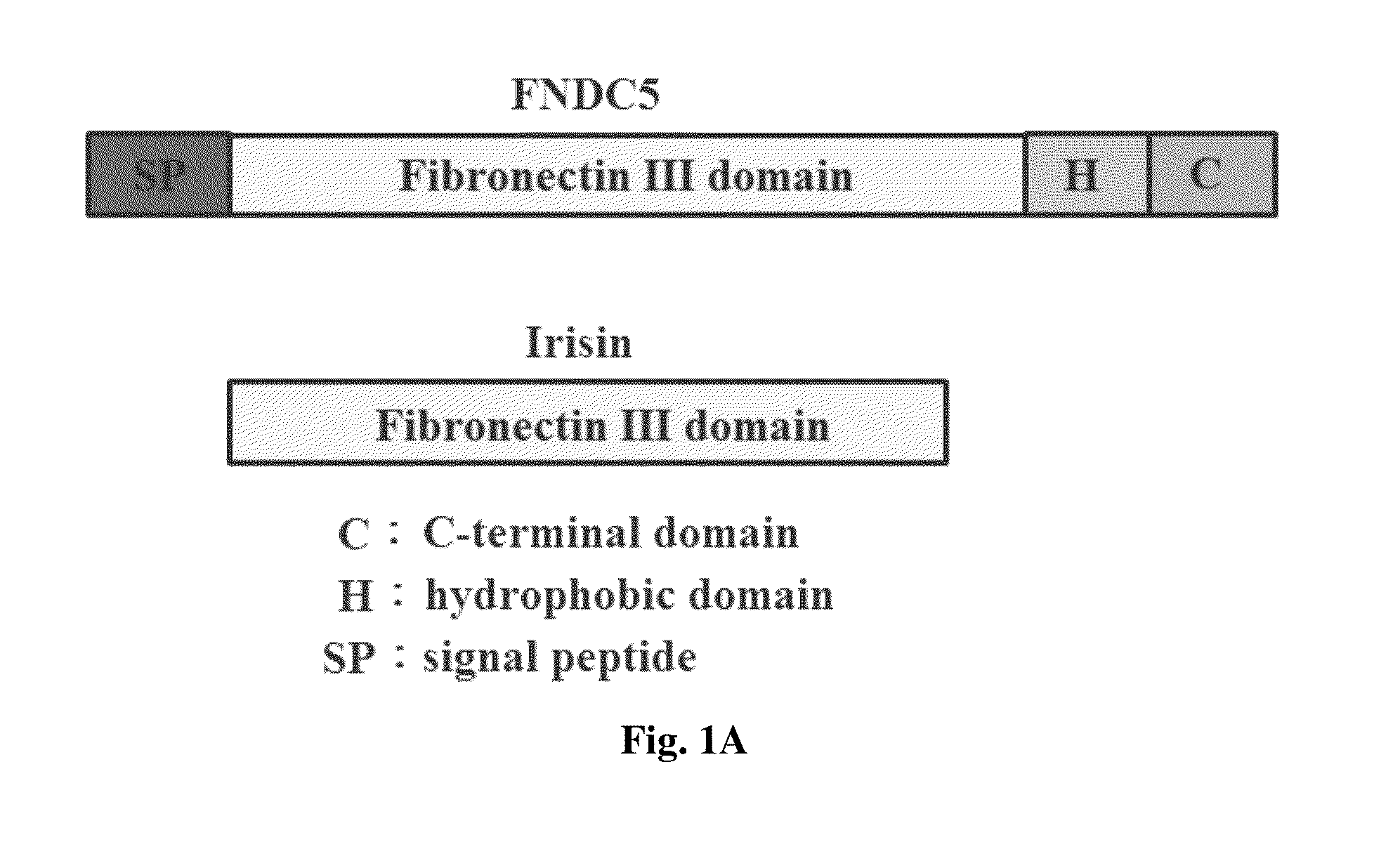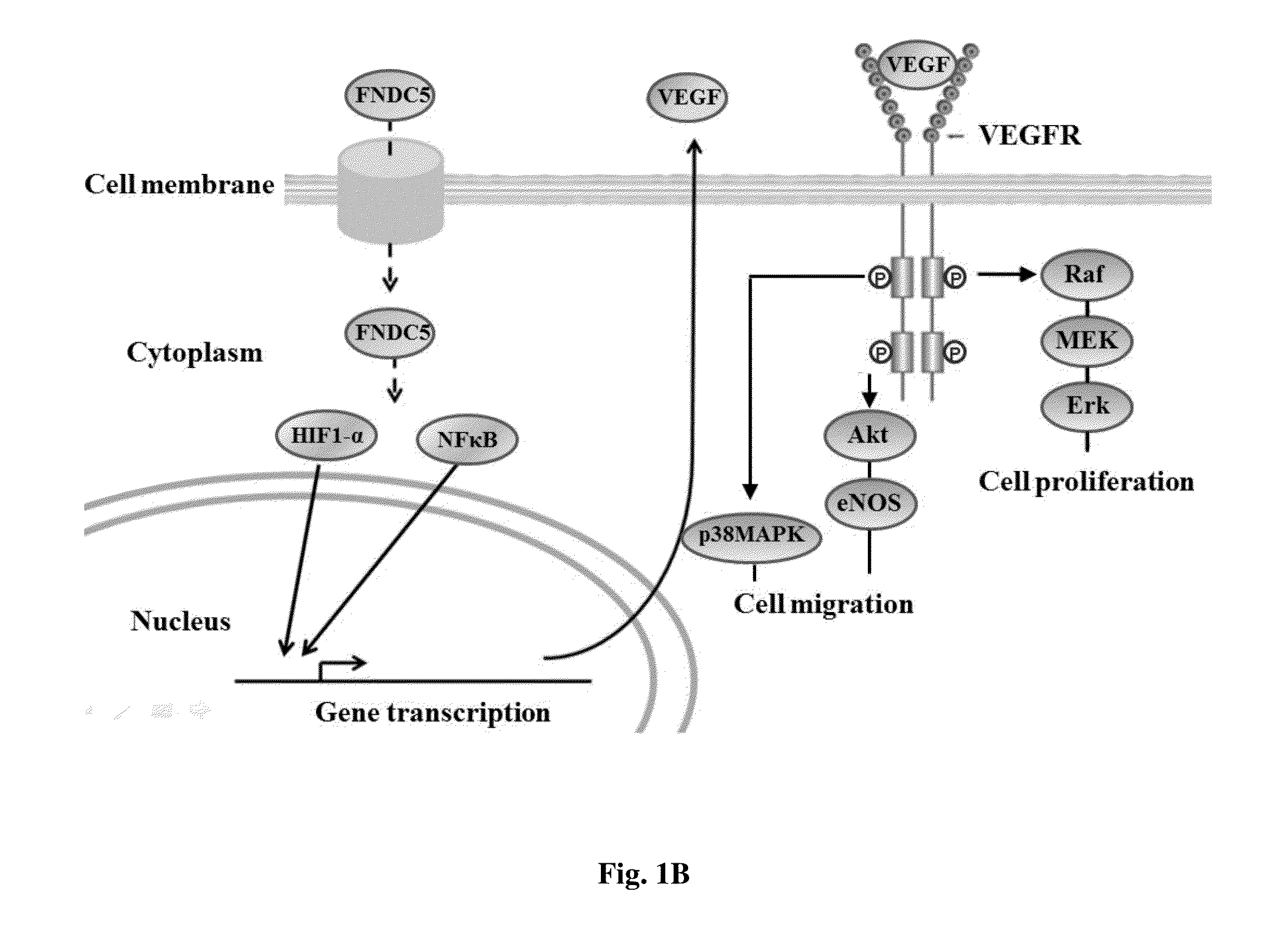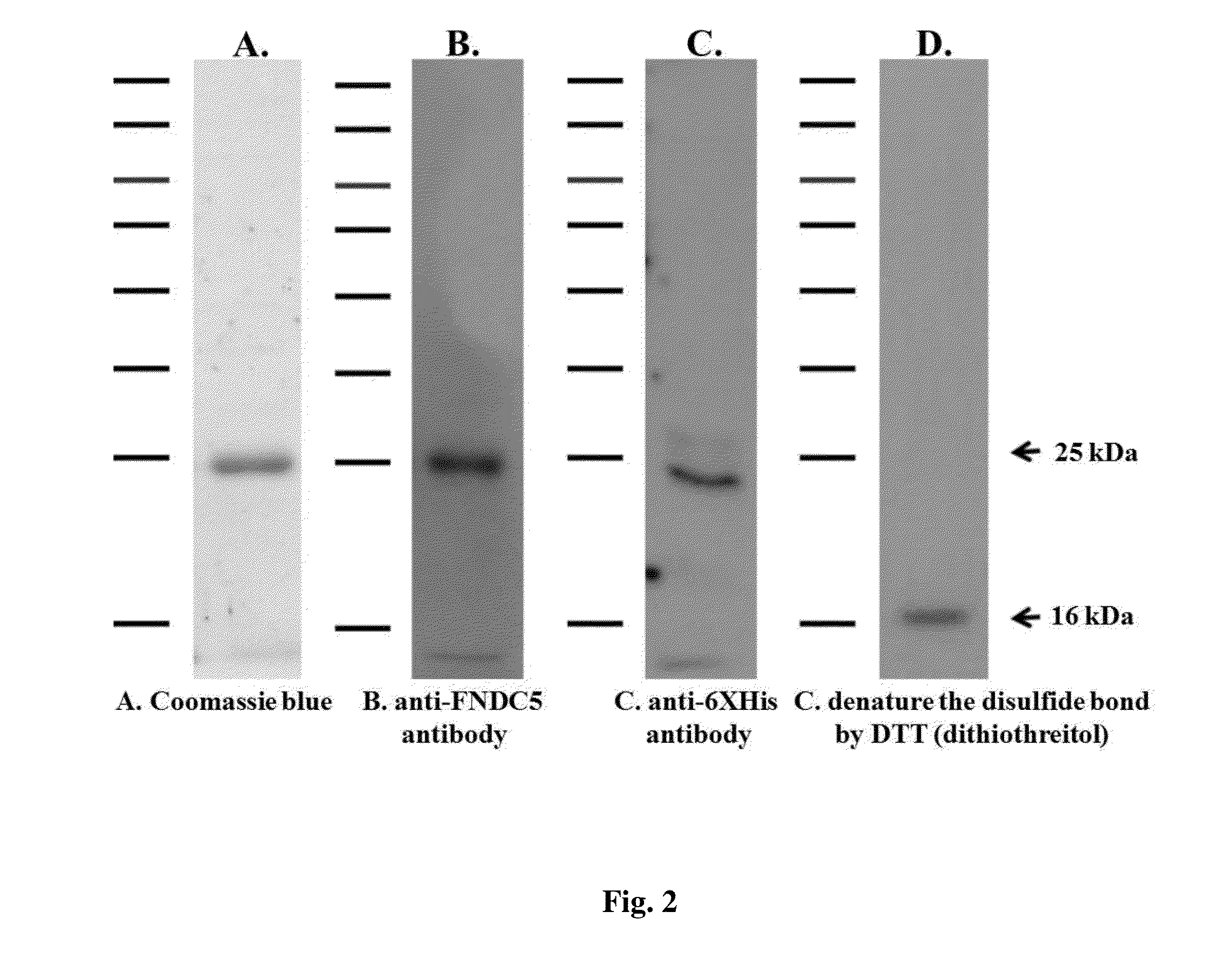Method for enhancing wound healing
a wound healing and enhancing technology, applied in the field of enhancing wound healing, can solve the problems of not reporting whether fndc5 or irisin can modulate angiogenesis and wound healing, and achieve the effects of enhancing nfb, nfb, and nitric oxide activity
- Summary
- Abstract
- Description
- Claims
- Application Information
AI Technical Summary
Benefits of technology
Problems solved by technology
Method used
Image
Examples
example 1
Methods
Cloning, Expression, and Purification of Recombinant FNDC5
[0086]The DNA sequence of SEQ ID NO: 3 encoding fibronectin type III domain-containing protein 5 (FNDC5) was amplified by polymerase chain reaction (PCR) with forward primer of SEQ ID NO: 4 and reverse primer of SEQ ID NO: 5, and then subcloned into the NotI and BamHI sites of the pET28a vector (Novagen Inc., Madison, Wis.) to yield the pET28a-FNDC5 plasmid. For expression and purification, the pET28a-FNDC5 plasmid was transformed into BL-21 (DE3) pLysS competent cells, which was derived from Escherichia coli (E. coli). Isopropyl-β-D-thiogalactopyranoside (IPTG) was used to induce the expression of the N-terminal extracellular domain (N-terminal ECD). The transformed cells were grown at 37° C. optical density (OD) 600 nm of 0.6-0.8. Subsequently, the cells were added IPTG to final concentration (1 mM) and incubated for 4 hours at 30° C. to induce the protein expression. The cell pellet was harvested by centrifugation a...
example 2
Methods
The Stability of Recombinant FNDC5 Proteins Storage at −80° C., −80° C. Freeze and Thaw, −20° C., 4° C., Room Temperature and 37° C. for 14 Days
[0088]To evaluate the stability of recombinant FNDC5 at different temperatures, recombinant FNDC5 solution (in phosphate buffered saline; 10 ng / mL) was placed at −80° C., −80° C. freeze and thaw, −20° C., 4° C., room temperature (RT, 25° C.), and 37° C. for 10 days then subjected to a SDS-PAGE / Western blot analysis and endothelial proliferation assay.
Results
The Recombinant FNDC5 Proteins were Stable at Different Temperatures
[0089]The recombinant FNDC5 was stable at room temperature for 10 days as no visible protein degradation from −80 to 25° C. (FIG. 3A) and 37° C. for 10 days that still induced the proliferation in endothelial cells by MTT assay (proliferation assay) (FIG. 3B). The Western result also showed the equal band in different condition (from −80 to 25° C.) except 37° C. FNDC5 had high stability at different temperatures.
example 3
Methods
Western Blotting and FNDC5 Induced VEGF Signaling Pathway
[0090]HUVEC lysates were prepared using RIPA lysis buffer (50 mM Tris-HCl pH 7.4, 1% NP-40, 0.25% sodium deoxycholate, 150 mM NaCl, 1 mM PMSF and protease inhibitors). An aliquot of proteins were separated by 10% SDS-PAGE and transferred onto the polyvinylidenedifluoride membranes (PVDF) (Immobilon-P membrane; Millipore, Bedford, Mass.). After blocking for 30 min, the membrane was incubated with primary antibodies for 2 hours at room temperature, and then conjugated with horseradish peroxidase (HRP)-conjugated secondary antibodies (anti-rabbit IgG, anti-mouse IgG or anti-goat; Santa Cruz, Burlingame Calif., USA) (1:5000 dilution) for 1 hour. Immunoreactivity was detected by ECL plus luminal solution (Amersham Biosciences, Piscataway, N.J., USA). The immunoband intensities were quantified by densitometric scanning. The primary antibodies used in the present invention were antibodies against FNDC5 (1:1000 dilution; abcam)...
PUM
| Property | Measurement | Unit |
|---|---|---|
| Cell proliferation rate | aaaaa | aaaaa |
Abstract
Description
Claims
Application Information
 Login to View More
Login to View More - R&D
- Intellectual Property
- Life Sciences
- Materials
- Tech Scout
- Unparalleled Data Quality
- Higher Quality Content
- 60% Fewer Hallucinations
Browse by: Latest US Patents, China's latest patents, Technical Efficacy Thesaurus, Application Domain, Technology Topic, Popular Technical Reports.
© 2025 PatSnap. All rights reserved.Legal|Privacy policy|Modern Slavery Act Transparency Statement|Sitemap|About US| Contact US: help@patsnap.com



